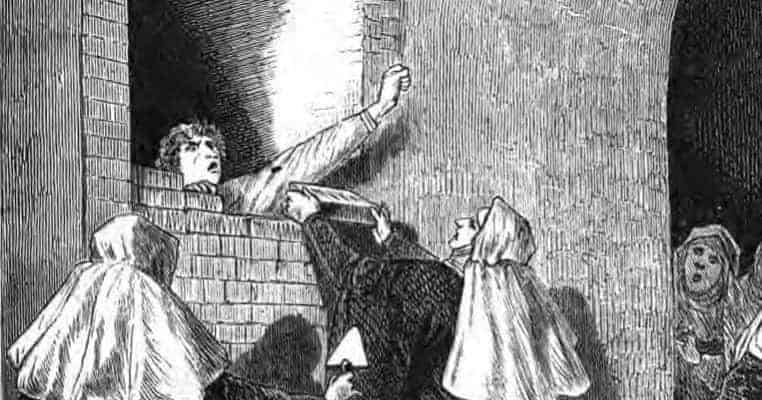In its purest sense, execution should simply be a way of disposing of miscreants so that they can no longer harm society. Across history and different cultures, murderers, rapists, and traitors have all earned execution. However, communities have also condemned people to death for their beliefs and for challenging the social order. Death has also been awarded for relatively minor offenses such as theft or adultery.
The motives behind death sentences are not always impartial. Executions have often served as a kind of revenge, a way of inflicting pain and mental torture on the convict. In the past, rulers also included these extra elements of punishment to turn executions into spectacles. These gruesome events were not just to provide entertainment at the convict’s expense but also to send an important message to those watching. In this sense, executions served as grisly examples of what happened if people did not toe the line.
These motives explain why some judicial deaths were designed to be as slow, drawn-out and cruel as possible. They tormented the individual at length, so that death, when it came, was a welcome relief. Here are just twelve of the most torturous death sentences handed out across history.

Crucifixion
The term ‘crucifixion ‘ comes from the Latin for a gallows cross-crux. However, despite being a form of execution most associated with the Romans, crucifixion was utilized as a means of execution by other civilizations such as the Greeks, Carthaginians’ and later Japan and Islam. Crucifixion’s popularity as a very public punishment stems from the slow and agonizing death of the victim- the reason why it also lends its name to the term “excruciating.”
There were various types of crucifixes. The crux simplex was one of the earliest forms, a single upright pole to which the victim was attached. However, most crucifixes had a crossbeam. The cross beam of the crux commissa was fixed to form a ‘T’ shape while the crux immissa the cross associated with Christ, had the crossbeam a little below the top of the vertical pole. Some crucifixions were inverted; others spread the body in an ‘X.’ But all had the same principle behind them: to kill the victim slowly by suffocating them under their body weight.
The position of the person on the cross meant that the arms had to bear the body’s weight. To take a breath, the victim would have to draw up the body using the arms- an action that would quickly become exhausting, placing the heart and lungs under great strain. Death would eventually occur by suffocation, exhaustion or heart failure.
How quickly death came depends on the fitness of the individual. An elderly, sickly person would probably expire quickly. But for the young and fit, death could take several days. Breaking the victim’s legs could speed up their demise. Crosses were supplied with a footrest or suppedaneum where the feet could rest, offering a respite to the upper body. However, if the legs were broken, they could not rest on it- meaning suffocation occurred more quickly.
Conversely, a victim could be forced to use the suppedaneum by having their feet nailed to it or, failing that, to the cross itself. Such was the case with, Jehohanan, a victim of crucifixion found in a tomb in Jerusalem in 1968. Jehohanan’s body is the only one belonging to a victim of crucifixion to be discovered in the archaeological record. Jehohanan was probably crucified by the Roman s after the siege of Jerusalem in 70AD. The crucifixions of the Jewish rebels were particularly cruel according to the historian Josephus, who describes how the Romans acted “out of rage and hate.” Jehohanan’s feet show signs that they were nailed to either side of his cross, which would have slowed down his death.

